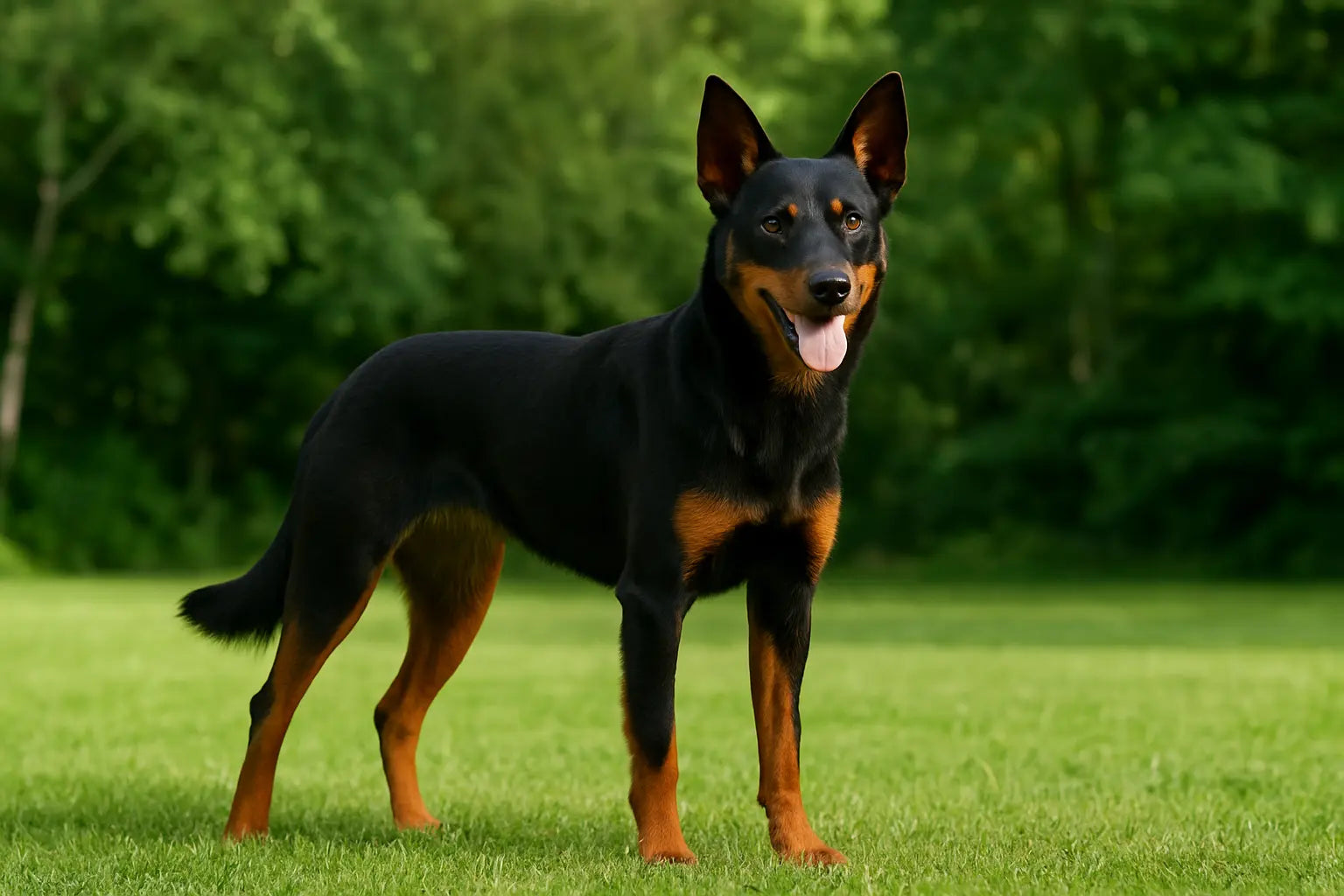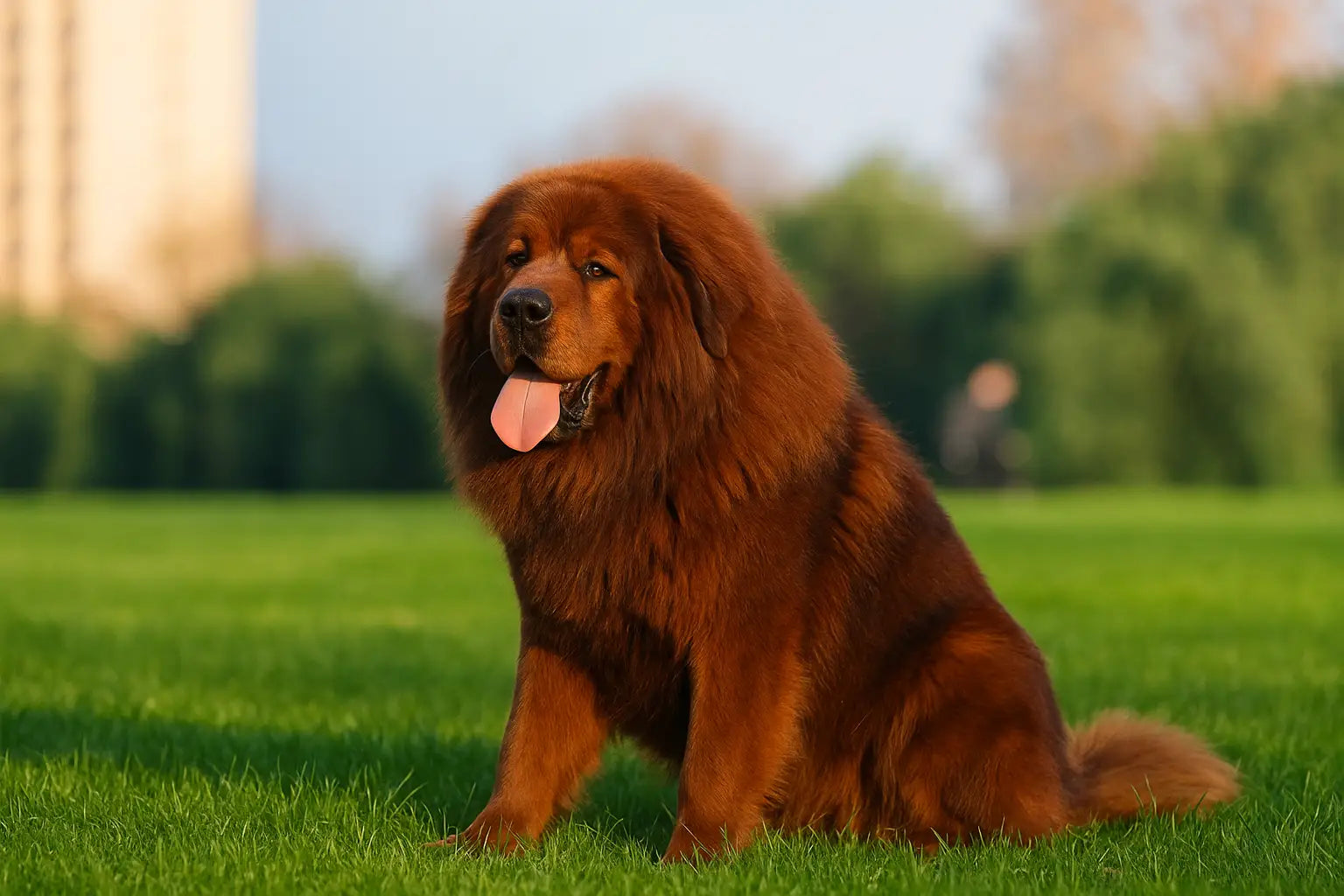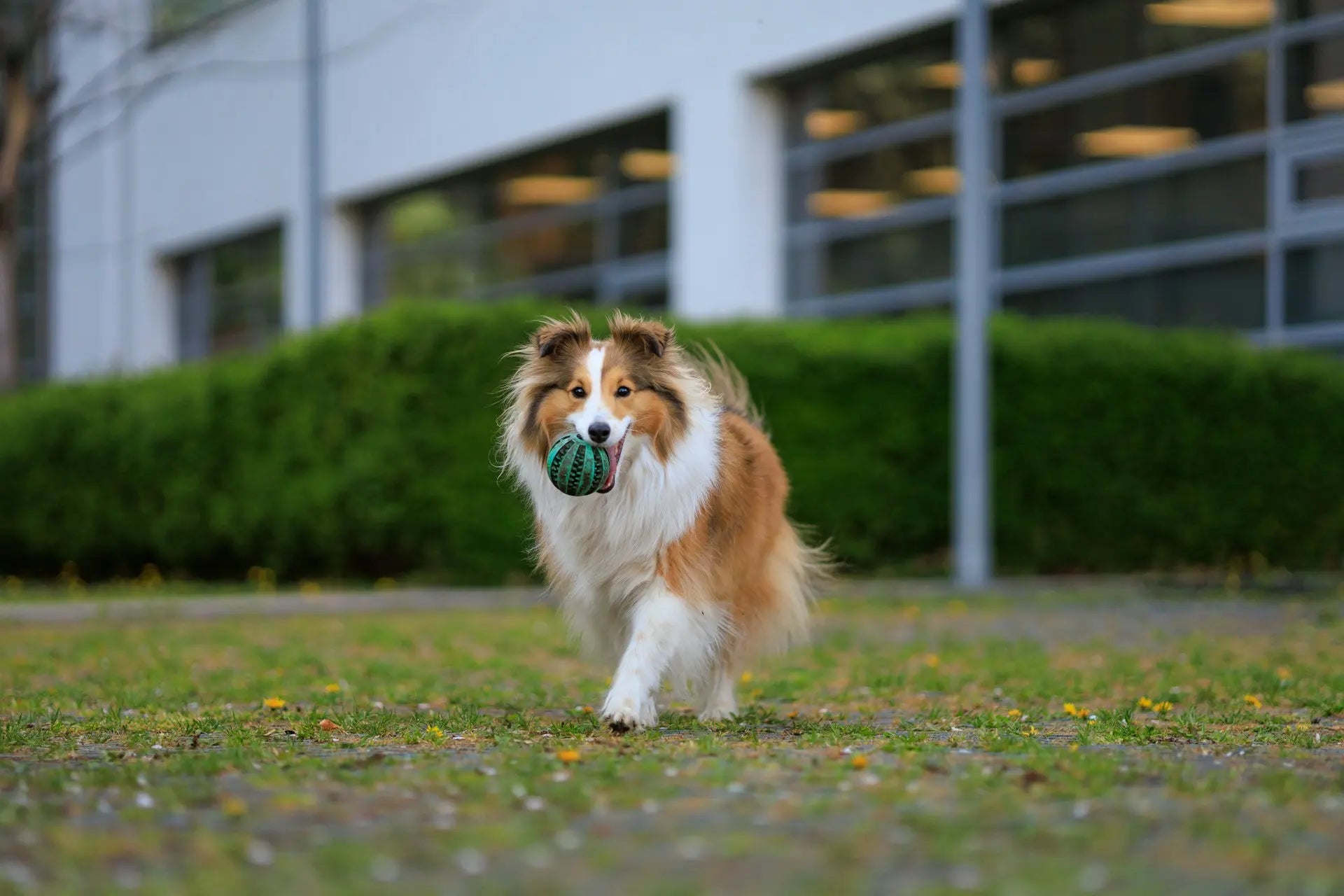
Australian Kelpie Dog Breed: Trusted Guide to Care, Training & Health
The Australian Kelpie is one of Australia's most iconic working dog breeds, valued for its intelligence, stamina, and loyalty. Originally bred to herd livestock across vast rural properties, the Kelpie has also earned a place as a loyal family companion for the right kind of home.
If you are considering welcoming an Australian Kelpie into your life, this guide will answer some of the most common questions to help you better understand their care, temperament, and daily needs.
Quick Facts Overview
|
Trait |
Details |
|
Size Category |
Medium |
|
Height & Weight |
Height: 43–51 cm; Weight: 14–21 kg |
|
Coat Type & Colours |
Short, weather-resistant coat; black, red, chocolate, fawn, blue, or tan combinations |
|
Energy Level |
Very High |
|
Origin |
Australia |
|
Grooming Needs |
Low |
|
Temperament |
Loyal, intelligent, hardworking, alert |
|
Trainability |
Very High |
|
Compatibility |
Best for active owners and working homes |
|
Lifespan |
12–15 years |
Breed Origins and History
The Australian Kelpie’s story begins in the 19th century, developed from British working collies brought to Australia. Bred to withstand the country’s harsh climate and vast open spaces, Kelpies became invaluable to farmers for managing large flocks of sheep. Their legendary stamina and natural herding instincts made them famous not only across Australia but around the world. To this day, Kelpies remain a symbol of dedication, agility, and Aussie grit.
Personality and Temperament
The Australian Kelpie is an intelligent and intensely loyal breed. They form deep bonds with their owners and thrive on having a purpose. Alert and naturally wary of strangers without being aggressive, Kelpies are confident and independent thinkers. They love to work, and without enough stimulation, they may invent their own (not always desirable) activities!
Trainability and Intelligence
Kelpies are exceptionally trainable thanks to their high intelligence and willingness to please. They need regular, consistent training and thrive when given tasks or challenges.
-
Start early with basic obedience and structured socialisation
-
Use positive reinforcement—treats, praise, and play are powerful motivators
-
They excel in agility, obedience, herding, and scent work
-
A strong, comfortable training harness supports active training sessions
-
Reward consistently with a treat bag during outdoor practice
Exercise and Activity Requirements
High energy doesn’t even begin to describe the Australian Kelpie. They need serious daily exercise to stay balanced and content.
-
1.5 to 2 hours of exercise daily
-
Activities like long hikes, running, agility courses, and herding games are ideal
-
Mental challenges are just as important as physical ones
-
A reliable hands-free lead makes it easier to keep up with them
-
Without sufficient stimulation, they may become bored and destructive
Physical Characteristics
Built for work and endurance, the Kelpie is lean but strong, athletic yet agile.
-
Height: 43–51 cm
-
Weight: 14–21 kg
-
Coat: Short, double-layered, weather-resistant coat
-
Colours: Black, red, chocolate, fawn, blue, and black/tan variations
-
Fit perfectly into small to medium dog gear
Living Environment Suitability
Kelpies are best suited for owners who live an active lifestyle or work on rural properties.
-
Ideal for farms, acreages, or homes with large fenced yards
-
Apartment living is challenging unless extremely high daily exercise is provided
-
Thrive when given a "job" like herding, agility sports, or advanced obedience
-
Rest and recover on a supportive orthopaedic dog bed
-
Safe car travel is important—always secure them with a dog car harness
Grooming and Maintenance
The Australian Kelpie is a low-maintenance breed when it comes to grooming.
-
Brush once a week to remove dead hair and distribute oils
-
More frequent brushing during seasonal shedding (spring and autumn)
-
Bathe only when necessary to preserve their coat’s natural oils
-
Keep nails trimmed and ears clean
-
Use a lightweight soft collar for everyday wear
Common Health Issues
Kelpies are generally healthy and hardy but can be prone to a few conditions.
-
Common issues: hip dysplasia, progressive retinal atrophy (PRA), cryptorchidism
-
Maintain a healthy weight and stay active to protect joints
-
Provide joint support as they age with a quality dog bed
-
Regular veterinary check-ups help catch issues early
Diet and Feeding Guidelines
A balanced diet supports the Kelpie’s high energy and active metabolism.
-
Puppies: Feed 3 meals a day, focused on growth and energy
-
Adults: Feed 2 meals a day with high-quality, active or working-dog formulas
-
Adjust portions based on activity level and metabolism
-
Always ensure access to fresh, clean water
-
Portable bowls are useful for travel and outings
Compatibility with People and Other Pets
With the right upbringing, Kelpies are affectionate, playful, and excellent companions.
-
Best with active singles, couples, or families with older children
-
Can live with other dogs; early socialisation helps
-
May have strong herding instincts around young kids and small animals
-
Manage multi-dog walks easily with a coupler lead
Behavioural Issues and Management
A bored Kelpie is a creative Kelpie! Prevent behavioural challenges through proactive management.
-
Needs structured tasks and regular mental stimulation
-
Can develop herding behaviour if under-stimulated
-
Use training games, scent work, and agility to direct energy positively
-
A no-pull harness supports polite leash behaviour
-
Durable durable toys help prevent boredom-driven chewing
Essential Gear for Australian Kelpies
Walking and Training
Comfort and Rest
Fun and Enrichment
FAQs: Australian Kelpie
1. Are Australian Kelpies good pets?
Yes, Australian Kelpies can make wonderful pets for active households. They are loyal, intelligent, and hardworking. However, they are best suited to owners who can meet their high exercise and mental stimulation needs.
2. Can Kelpies be house dogs?
Kelpies can live indoors but they are naturally energetic working dogs. They need plenty of daily exercise and mental engagement to stay happy in a house environment. Without enough activity, they may become restless or destructive.
3. Are Kelpies high maintenance?
In terms of grooming, Kelpies are low maintenance, but they are high maintenance when it comes to exercise and mental stimulation. They require a lot of physical activity, problem-solving tasks, and interaction with their owners to prevent boredom.
4. Can Kelpies be left alone?
Kelpies prefer companionship and do not do well if left alone for long periods. Extended isolation can lead to anxiety, boredom, and destructive behaviours. If you must leave a Kelpie alone, it is important to provide toys and activities to keep them mentally busy.
5. Do Kelpies bark a lot?
Kelpies are naturally alert and may bark when they see or hear something unusual. While they are not excessive barkers without reason, without proper training and mental stimulation, their barking can become a problem.
6. Are Kelpies good indoor dogs?
Australian Kelpies can adapt to indoor life if they are given enough outdoor exercise daily. They enjoy being close to their families but are happiest when they have a job to do, even if it is structured play or learning new tricks.
7. Do Kelpies get separation anxiety?
Yes, Kelpies are prone to separation anxiety if they are left alone for too long without stimulation or interaction. Training them to be comfortable when alone and providing enrichment activities can help manage this tendency.
8. Are Australian Kelpies aggressive?
Australian Kelpies are not naturally aggressive. They are usually friendly, especially when properly socialised. However, without training or if they are poorly socialised, they can show territorial or herding-related behaviours.
9. What health problems do Kelpies have?
Kelpies are generally healthy but can be prone to conditions like hip dysplasia, progressive retinal atrophy, and cerebellar abiotrophy. Choosing a responsible breeder who screens for these issues is important for long-term health.
10. Are Kelpies good or bad?
Kelpies are good dogs for the right owners. They are highly intelligent, loyal, and hardworking but require plenty of attention, training, and exercise. They are best suited to active individuals or families who can meet their energy levels.
Final Thoughts
Australian Kelpies are highly intelligent and devoted dogs that thrive in active, engaged homes. While they are not suited to every lifestyle, for owners who can meet their exercise and mental stimulation needs, they make exceptional companions.
Understanding their unique traits and providing the right environment will help you build a rewarding and lasting bond with this energetic and hardworking breed.
Need tough, active-ready gear for your Aussie Kelpie?
Visit EzyDog for durable, comfortable equipment made for hardworking, spirited breeds like the Kelpie.



Leave a comment
This site is protected by hCaptcha and the hCaptcha Privacy Policy and Terms of Service apply.